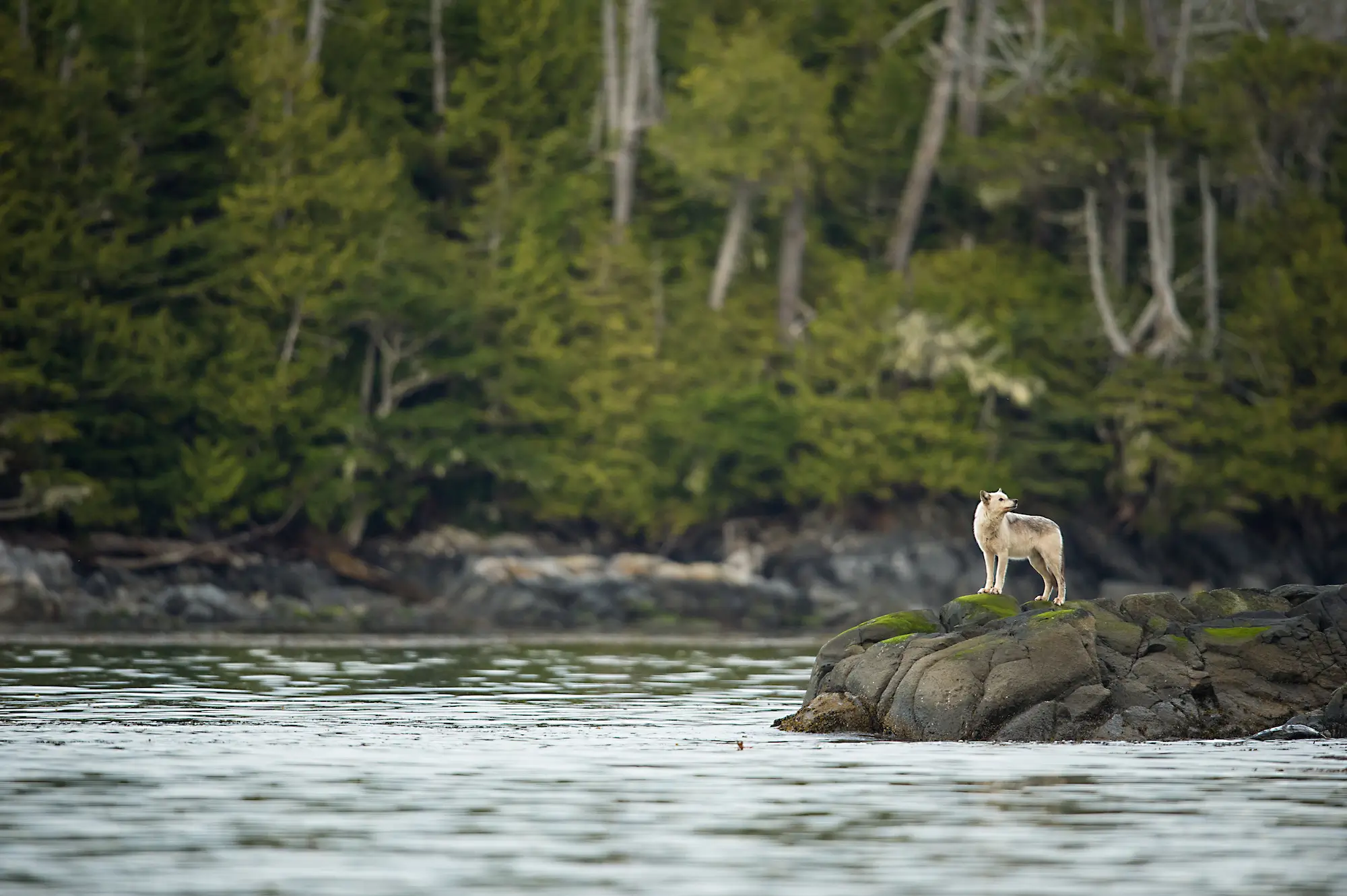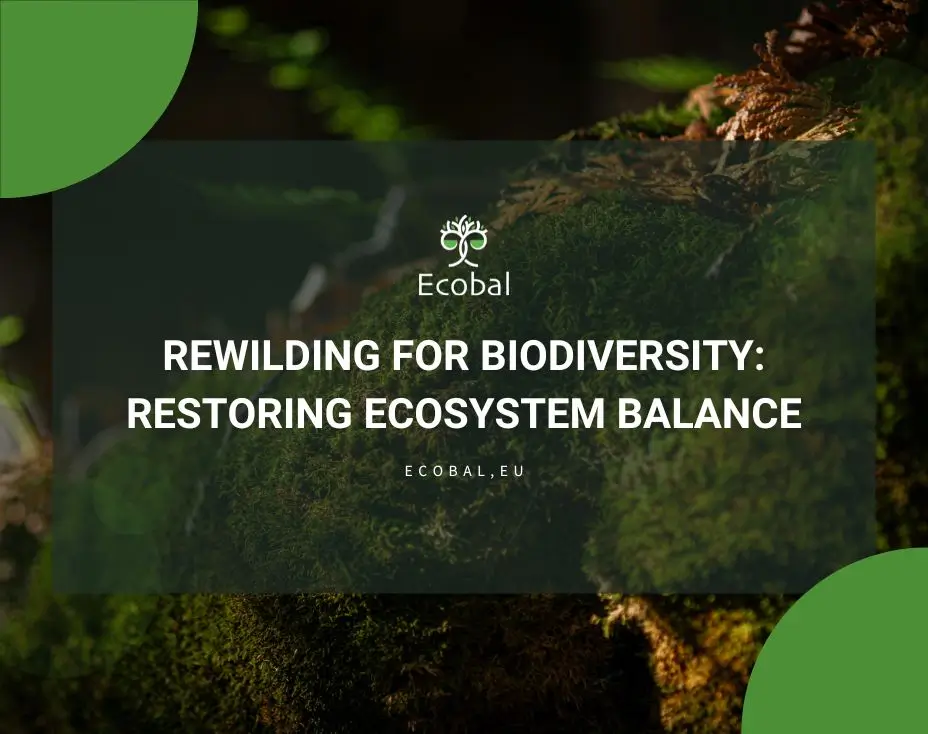Rewilding for Biodiversity Restoration: Evaluating the Ecological Benefits of Reintroducing Endangered Species to Enhance Biodiversity and Restore Eco
Biodiversity loss is one of the most pressing environmental challenges of the 21st century, with species extinction rates estimated to be 100 to 1,000 times higher than natural background rates. Human activities, including habitat destruction, climate change, and overexploitation of resources, have disrupted ecosystems and led to the decline of many species. In response, conservation strategies such as rewilding have gained traction as a means of restoring biodiversity and ecosystem functioning.
Rewilding focuses on restoring entire ecosystems rather than individual species. It aims to recreate functioning ecosystems that closely resemble their natural state by minimizing human intervention and relying on natural processes (Pires, 2017). This approach often involves the reintroduction of keystone species, organisms that play a critical role in maintaining the structure of an ecological community. Keystone species can have cascading effects that benefit other wildlife and the environment (Gregr et al., 2020). For example, the reintroduction of gray wolves to Yellowstone National Park in 1995 serves as a seminal example of the impact of rewilding.

Ecological Benefits of Reintroducing Endangered Species:
Enhancing Biodiversity: The reintroduction of endangered species plays a crucial role in enhancing biodiversity within ecosystems. A meta-analysis of rewilding projects indicates that restoring keystone species leads to increased species richness and abundance. For instance, efforts to revive Iberian lynx populations in Spain have involved habitat restoration and prey reintroduction, resulting in population recovery and improved ecosystem health (Delibes-Mateos et al., 2022).
Restoring Ecosystem Functions: The presence of keystone species is vital for maintaining essential ecosystem functions such as nutrient cycling, water regulation, and habitat creation. For instance, beavers are known as ecosystem engineers due to their ability to create wetlands through dam-building activities. These wetlands provide critical habitats for numerous species while improving water quality and enhancing flood regulation (Law et al., 2017).
Facilitating Natural Processes: Rewilding promotes the autonomy of natural processes by allowing ecosystems to self-regulate. This approach contrasts with traditional conservation methods that often require ongoing human management. By enabling natural interactions among species, ecosystems can adapt more effectively to environmental changes.
Mitigating Climate Change: Rewilded ecosystems contribute significantly to climate change mitigation by enhancing carbon sequestration. Restored forests and wetlands can absorb substantial amounts of carbon dioxide from the atmosphere. Evidence suggests that the restoration and conservation of wild animals and their ecosystem roles as a key component of natural climate solutions that can enhance the ability to prevent climate warming beyond 1.5 °C (Schmitz et al., 2023).
Economic and Social Implications: Rewilding not only benefits ecological health but also has positive economic implications. Rewilded areas can attract ecotourism opportunities that generate income for local communities while raising awareness of biodiversity conservation.
Why It Matters for Ecobal
At Ecobal, we are committed to staying at the forefront of technological advancements in CO₂ sequestration. By integrating cutting-edge technologies such as ultra-fast CO₂ hydrate formation, we enhance our efforts to transform former agricultural or barren lands into thriving ecosystems.
Ecobal has achieved significant milestones, including:
- Nature Spots in five different EU countries: France, Italy, Poland, Spain, and Romania.
- Ecobal’s storage capacity: Ecobal manages 155 hectares of Nature Spots across the EU, storing 1,581 tons of CO₂, releasing about 1,150 tons of oxygen per year, and conserving nature.
This ensures that our projects not only effectively sequester CO₂ but also contribute to sustainable biodiversity conservation.
Ecobal Mission:
- Raise awareness and establish authority to certify the ecological health and capacity of rural and natural landscapes.
- Monetize ecosystem services to demonstrate the economic value of nature.
- Use natural ecosystems as efficient carbon sinks for CH₄ and CO₂ sequestration and biodiversity conservation.
- Turning CO₂ and CH₄ from a challenge into a valuable and tradable commodity.
- Manage soil microbiota and fauna to improve soil health and ecosystem functionality.
- Restoring biodiversity through the reintroduction and conservation of native species.
Conclusion
Rewilding represents a transformative approach to biodiversity restoration by focusing on the reintroduction of threatened species and allowing natural processes to shape ecosystems. The ecological benefits of this strategy are profound, including enhancing biodiversity, restoring ecosystem functions, facilitating natural processes, and contributing to climate change mitigation efforts.
As global biodiversity declines at an alarming rate, embracing rewilding as a viable conservation strategy offers hope for restoring ecological balance and ensuring a sustainable future for both wildlife and human communities.
About the Author
This article was written by Dr. Amisalu Milkias, an environmental specialist with expertise in ecosystem restoration, biodiversity conservation, and sustainable land management. As a researcher and advocate for rewilding, Dr. Milkias focuses on nature-based solutions to enhance ecological resilience and promote sustainable conservation strategies.
Selected Sources
- Delibes‐Mateos, M., Glikman, J. A., Lafuente, R., Villafuerte, R., & Garrido, F. E. (2022). Support to Iberian lynx reintroduction and perceived impacts: Assessments before and after reintroduction. Conservation Science and Practice, 4(2), e605.
- Schmitz, O. J., Sylvén, M., Atwood, T. B., Bakker, E. S., Berzaghi, F., Brodie, J. F., … & Ylänne, H. (2023). Trophic rewilding can expand natural climate solutions. Nature Climate Change, 13(4), 324-333.
- Law, A., Gaywood, M. J., Jones, K. C., Ramsay, P., & Willby, N. J. (2017). Using ecosystem engineers as tools in habitat restoration and rewilding: beaver and wetlands. Science of the Total Environment, 605, 1021-1030.
- Gregr, E. J., Christensen, V., Nichol, L., Martone, R. G., Markel, R. W., Watson, J. C., … & Chan, K. M. (2020). Cascading social-ecological costs and benefits triggered by a recovering keystone predator. Science, 368(6496), 1243-1247.
- Pires, M. M. (2017). Rewilding ecological communities and rewiring ecological networks. Perspectives in Ecology and Conservation, 15(4), 257-265


